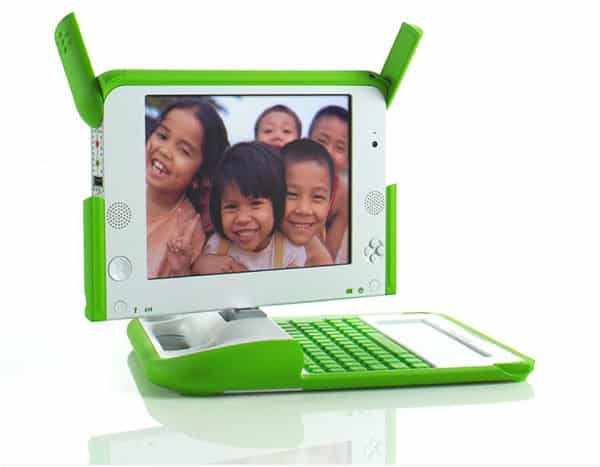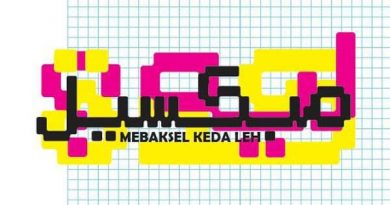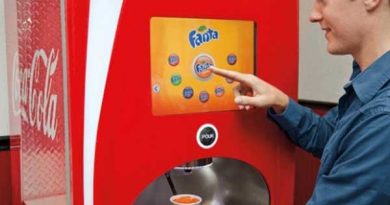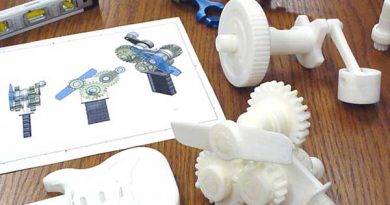Design Thinking Examples of Driving Creativity
For many, design thinking reflects several outcomes of the design value, and creativity and innovation are among them. When we dig deeper into design thinking examples, we see the applications of design characteristics in solving different problems creatively and innovatively.
We face increasingly challenging obstacles like climate change, pollution, poverty, lack of resources and other difficulties that have yet to manifest. Problems predicted years ago have become a reality we can now observe on daily newscasts. Can design and the different types of innovation save the world among these mixed, even chaotic, challenges? To solve these problems, we need to think differently and use mindsets that open our minds to approach problems using different perspectives that help us to build insight into the situation and build solution prototypes. Several tools allow us to achieve this goal during the Double Diamond Design Thinking, such as the SCAMPER technique and 5 Whys. Other tools can help us understand users, such as the Kano Model, customer journey mapping, and thematic analysis.
“We cannot solve our problems with the same thinking we used when we created them.” Albert Einstein
Implementing the creative thinking method consists of thinking out of the box and finding innovative solutions for existing problems, an essential part of the design process. In his report, “Cox Review of Creativity in Business,” Sir George Cox described design as the tool that transforms creativity into innovation. While a project usually starts with a creative idea, design takes the lead in converting the idea into a thriving, innovative experience. However, the role of design is linked to its broader definition and participation within the organisation or community. In my previous article, “Five Lessons to Turn Design Into Business Success,” companies such as P&G and Apple served as examples of how design can lead companies to success by considering the broader role of design, starting from the ideation phase through to analysing consumer feedback about the product or service.
In the last decades, designers have become more concerned about the community and environment at large through diversifying types of design such as human-centred, service, sustainable, and innovative. These types of design extended our understanding of how design can serve the community and how to use design thinking methodology and tools to provide solutions to address problems like poverty and climate change. The IDEO design firm offers a practical example of the critical role of design in sustainable development while simultaneously solving daily issues faced by people living in underdeveloped countries. Several case studies show the application of design for creative problem-solving, and below are design thinking examples to illustrate this application.
Design Thinking Example of Learning a New Language
Chineasy is a project created by ShaoLan Hsueh, a Taiwanese entrepreneur and writer, to make learning the Chinese language easier. Her project aims to link each Chinese letter or group of letters with its meaning through visual shapes and graphics. Utilising shapes and colours makes learning these characters much more accessible.

Learning the Chinese language is complex and challenging for many. To address this problem, ShaoLan thought of how different words can be illustrated to provide an easier way to remember and write them. They reversed the letters from being abstracted to show their visual meaning. One exciting tool to apply this method is Reverse Brainstorming.
Access to Technology and Education
As designers stand behind every control panel, user interface, website, and mobile application, their role is to understand how the end consumer uses the product or services to build a user-friendly interface. Companies like Apple tend to prioritise their users’ priorities when creating their products. They usually design simple interfaces with easy access to information and functionality to make life significantly more accessible for users, especially older people and users with disabilities.
Building user-friendly products requires a solid understanding of the end user, which can be achieved through user experience research. Designers use these user experience results to create products that fit the users’ needs. An example of considering the user experience in human-centred design is the One Laptop Per Child project (OLPC). The project was funded by several companies, including Google, AMD, and eBay, to build a low-cost laptop that is designed for children in rural areas. The computer is designed for a better user experience for children and targets educational purposes. The laptop was also designed to accommodate rural life and the possibility of a lack of electrical power by including the ability to recharge the battery using solar energy.
Building A Sustainable World
Designers are now playing an essential role in achieving achieving sustainable development. Due to the irresponsible consumption of natural resources, designers should consider using sustainable design, which aims to integrate an environmentally friendly approach and consider natural resources in the design process. Designers need to consider sustainable design principles such as the visual shape of the product, function, cost, using renewable energy in production, recycling, and durability. Applying these principles can effectively reduce the consumption of natural resources, carbon emissions, and waste.

Increasing numbers of companies are reforming their strategies to achieve sustainability, which is reflected in the design of their products. Some of these companies include IKEA, Starbucks, and Lego (check How to Use Lego Serious Play in the Design Thinking Process?). To reduce the use of forest trees, IKEA has moved toward using mixed and recycled materials in its design. “Guide to IKEA Sustainable Design Strategy” Parts 1 and 2 thoroughly study how IKEA has implemented sustainable design in its products.
Designers are now playing an essential role in order to achieve sustainable development. Due to the irresponsible consumption of natural resources, designers should consider using sustainable design, which aims to integrate an environmentally friendly approach and consider natural resources in the design process. Designers need to consider sustainable design principles such as the visual shape of the product, function, cost, using renewable energy in production, recycling, and durability. Applying these principles can effectively reduce the consumption of natural resources, carbon emissions, and waste (check What is Circular Design? And How to Apply It.).
Increasing numbers of companies are reforming their strategies to achieve sustainability, which is reflected in the design of their products. Some of these companies include IKEA, Starbucks, and Lego. In order to reduce the use of forest trees, IKEA has moved toward using mixed and recycled materials in their design. “Guide to IKEA Sustainable Design Strategy” Parts 1 and 2 provides a complete study to how IKEA has implemented sustainable design in its products.
Design Thinking for Social Innovation: Proximity
The design aims to solve problems, and in social innovation, design tools such as the design thinking process contribute to building innovative solutions for communities. People in underdeveloped countries need more essential services such as electricity, water, healthcare innovation, and education. Designers can research new low-cost products and services for rural areas worldwide (check Why Design Thinking Doesn’t Work).
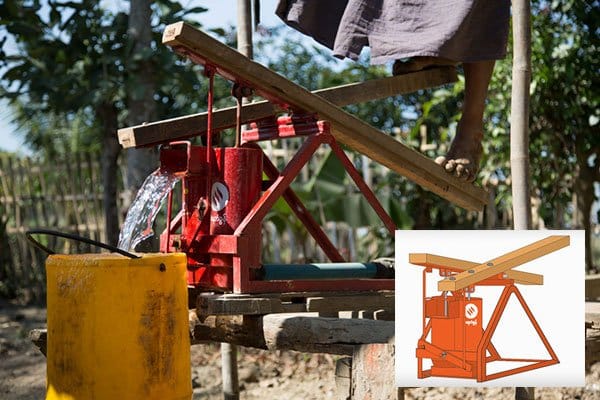
The Red Rhino is an irrigation suction pump created by Proximity Design to provide water for people in Myanmar. The product was created based on the human-centred design approach, costs only $36, and can provide 1000 gallons of water per hour. The product sold more than 29,000 units and is made of metal and wood.
Proximity Red Rhino irrigation suction pump (Source:
Solving the Light Problem: Liter of Light
Another example of the role of design and innovation is the Liter of Light global open-source movement that aims to provide sustainable and cost-free lighting systems for dwellings using transparent plastic bottles that contain carbonated drinks. The bottles are filled with water and a small amount of bleach to inhibit algae growth. Once they are fixed on the roof of the dwelling, the water reflects the light inside the home during the day at a rate similar to a 40-60-watt bulb.
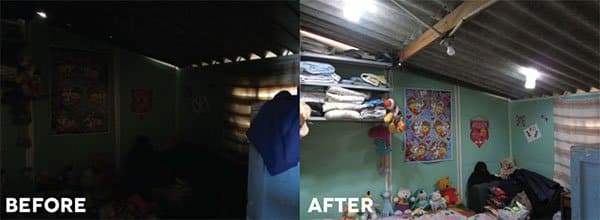
The project sets a design thinking example of how exploring the local material can help solve the problem if we have a different way to see these materials and how they can act in the problem/solution space. The unused plastic bottles have transformed from waste into a way to provide light for homes in rural areas without electricity, especially at night. The idea is simple, but the innovation was to make it happen, and now the project extends to using solar power instead of water to provide a better light source for children and families. Read those Design Thinking Books You Must Read (updated) to understand better how problems and solution spaces interact in design thinking.
Conclusion
Behind every product or service, a designer thought of the idea and took this idea from imaginary thoughts to the final innovative product. Based on this fact, the consequent question that arises is: Can designers save the world in the middle of significant problems such as climate change, poverty, pollution, and the other issues that will inevitably arise? Answering this question required an overview of the design role and how it contributes to the community and social innovation, which was provided. Analysing the designer’s role indicates that design is an essential contributor to both the sustainable development and innovation process. However, designers can’t work alone to solve world problems and meet future challenges; they must work in a team of stakeholders and professionals to reach innovative solutions very similar to their work within companies; the only difference is the targeted product or service – in this instance, the world.

